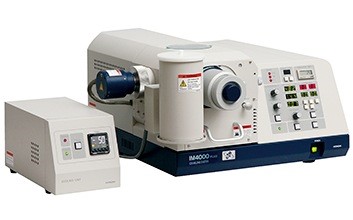Hitachi IM4000 Plus Ion Milling System
 Ion milling is a technique that physically etches samples using ions of an inert gas (usually Ar) accelerated from a wide beam ion source in vacuum. As a result, a thin layer of the material is removed from the surface. This technique is traditionally used in sample preparation for SEM (as a final stage after grinding and polishing) to remove mechanical stresses induced during polishing, flaws and artefacts that obscure imaging of the true microstructure of a material. This is especially critical for EBSB analysis. Ion milling also allows to produce cross sections of materials that are difficult or impossible to cut/polish by traditional methods (such as paper, polymers, and powders).
Ion milling is a technique that physically etches samples using ions of an inert gas (usually Ar) accelerated from a wide beam ion source in vacuum. As a result, a thin layer of the material is removed from the surface. This technique is traditionally used in sample preparation for SEM (as a final stage after grinding and polishing) to remove mechanical stresses induced during polishing, flaws and artefacts that obscure imaging of the true microstructure of a material. This is especially critical for EBSB analysis. Ion milling also allows to produce cross sections of materials that are difficult or impossible to cut/polish by traditional methods (such as paper, polymers, and powders).
Our Hitachi IM4000 Plus Ion Milling System utilizes a broad, low-energy Ar+ ion beam to produce wider, undistorted flat milling or cross-section milling without applying mechanical stress to the sample. The system accelerating voltage can be set between 0 and 6kV. The optional cooling temperature control function allows indirect cooling of the sample from 0° to -100°C by LN2 during cross sectional milling.
Location: AIBN Building #75, Room 112
Contact: Olexandra Marenych o.marenych@uq.edu.au
